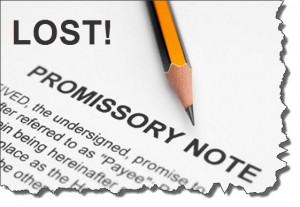Promissory notes and mortgage notes, these two terms have been thrown around for years, sometimes even used interchangeably. This is especially true when it comes to buying a house. Is there a difference between a mortgage note and a promissory note? If so, do you know what it is and does it matter?
Yes, there is a difference between a mortgage and a promissory note. The mortgage, also known as a deed of trust, is the document that provides the security for the loan. The promissory note is the actual binding document with the promise to pay back the loan. Each document should contain some items to be considered a promissory note or a mortgage.
The promissory note must include the name of the borrower, the address of the property (if applicable), the interest rate, either fixed or adjustable, the amount of the loan, the term or number of years of the loan, and a late charge amount. It will include both the lender’s and borrowers rights and responsibilities. This document is not recorded in the county land records. Think of this like the pink slip when selling a car. The lender is the one who holds the promissory note during the time the loan is outstanding. When the loan is fully paid off, the note is then given to the borrower like a pink slip is given to the fully paid off owner of a car. Promissory notes can be used for a variety of loans such as commercial loans, student loans, bank loans, and real estate loans. It does not have to be tied to a physical piece of property.
The mortgage note, or deed of trusts’ purpose is to provide security for the loan. It must include the name of the borrower, the address of the property, and the legal description of the property. It will also contain a clause that will allow the lender to demand the entire balance of the loan should the borrower default on loan. This is called an Acceleration Clause. If the borrower continues to default on the loan, the lender can begin foreclosure proceedings, and the real property can be sold to satisfy the debt. Unlike the promissory note, the mortgage note is recorded in the county land records after the borrower has signed it. When the loan is paid off, the lender will record that the loan has been satisfied with the county land records.
When purchasing a home, the borrower will actually be signing two separate documents, the promissory note and the deed of trust.
Promissory notes are a negotiable instrument that can be transferred or sold and endorsed (signed over), to a new owner. When the new owner of a note first attempts to collect on the note, a letter should be sent to the borrower asking for repayment. This should include a copy of the promissory note.
When unsure about what one is dealing with, promissory note or mortgage note, it is always best to consult with a professional.



